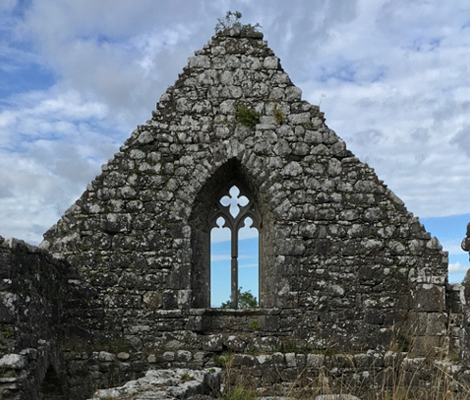
Lough Ree
History
Lough Ree (Lake of the Kings) is the fifth-largest lough in Ireland by area (105 km2), is studded with islands, and is a place of myth and legend. The greater part of Lough Ree is less than 10 m in depth, but there are six deep troughs running from north to south, reaching a maximum depth of about 36 m just west of Inchmore. The lake has been classified as mesotrophic in quality, but the size of the system means that a range of conditions prevail depending upon, for example, rock type. This gives rise to local variations in nutrient status and pH, which in turn results in variations in the phytoplankton and macrophyte flora. Therefore, species indicative of oligotrophic, mesotrophic, eutrophic and base-rich situationsoccur.
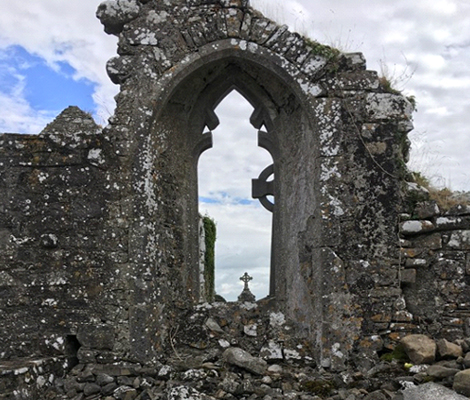
Islands and their folklore
The island of Inchcleraun or Inis Clorthrin, is where the mighty Queen Maeve of Connaught lived and died during the first century and it is to her sister Clorina or ‘Clorthrin’ that the island owes its name. Inchcleraun is known to locals as ‘Quaker’ island, referring to a man of the Quaker religion who lived on the island in the 18th century. Inchcleraun is located to the north of Lough Ree and is a distance of one mile from Barley Harbour Newtowncashel on the Longford shore.
Inchcleraun was founded in 540 AD by Saint Diarmaid who was a teacher to Saint Ciaran of Clonmacnoise and is buried here. The settlement was a place of learning and pilgrimage for centuries and contains the ruins of six churches, graveyards and a fort for protection against Viking raids. The oldest and smallest of these surviving ruins is Teampall Diarmaida (‘St. Dermot’s Church’), a tiny church measuring just 8ft x 7ft on the inside. This is thought to be the first church built on the island, constructed in honour of St. Diarmaid after his death in the late 6th century.
Along with Teampall Diarmaida, the remaining five churches that are still visible on the island today are Teampall Mór (‘Great Church’), Teampall Mhuire (‘St. Mary’s Church’), Teampall na Marbh (‘Church of the Dead’), Teampall na mBan (‘The Women’s Church’) and Teampall Clogás (‘Belfry Church’). In 1880, the churches were listed as national monuments, and today they are protected structures.
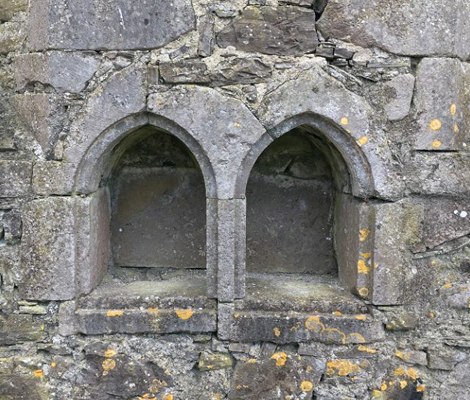
Inchcleraun is rich in history, from Queen Maeve and her sister, St. Diarmaid and his churches, to the repeated attacks by the Vikings in the late 800’s and early 900’s AD which left the island plundered and burned. The Irish people themselves attacked the island a few centuries later when the Munster men and the Danes of Waterford ambushed the settlements. In this present-day the island is a scene of calm and serenity and is uninhabited by people, however herds of goats and cattle continue to occupy Inchcleraun alongside its wildlife.
There are also other islands that have monastic sites. Many of these contain ancient ruins from the early Middle Ages. The larger such islands include Inis Inchturk, Inis Inchmore, Inis Inchbofin, and Inis Ainghin (Hare Island).
There is evidence of a ring fort on Inchmore, however, many of the islands experienced their initial habitation during the early Christian period when monasteries were established on Inchcleraun in the north of the lake to Hare Island in the south. Many of these monasteries survived (or were revived) in the early medieval period and continued to flourish until the time of Henry VIII. The later period of habitation appears to have been linked to the land confiscations of the seventeenth century. In the aftermath of these confiscations the local inhabitants who had been deprived of their lands in the surrounding counties migrated towards the islands in search of new beginnings.
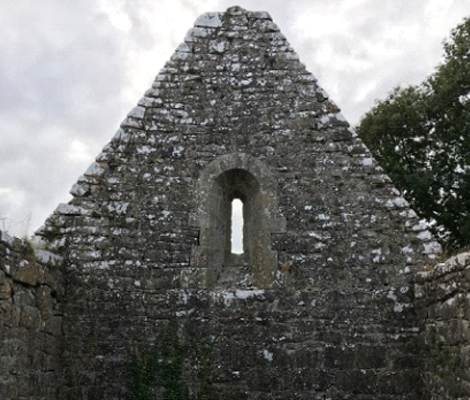
Wildlife
Some of the woodlands around the lake are of excellent quality and include some of the best examples of this habitat in Ireland. St. John’s Wood, situated beside Rinn Duin Peninsula on Lough Ree’s shores, is particularly important; it is considered to be one of the very few candidates for ancient woodland in Ireland.
The Lanesboro Commons North Woodland Walk is a beautiful looped trail through a natural woodland along the banks of the river Shannon. The trail is 3.2km and takes about an hour to complete. The trails narrow at the furthermost stretches of the loop and they also go through a disused lime quarry. Visitors can stroll past lake callows and into wooded areas around Lough Ree’s shores.
The nearby playground and facilities in Lanesborough make this a great day out for a family.
Map of Lanesboro Commons North Woodland Walk:
https://www.google.com/maps/d/u/0/viewer?mid=14VUqaCVEyhrzGxZxkHBBZPhNJqSASCpM&ll=53.6653868718827%2C-7.994504512702127&z=15
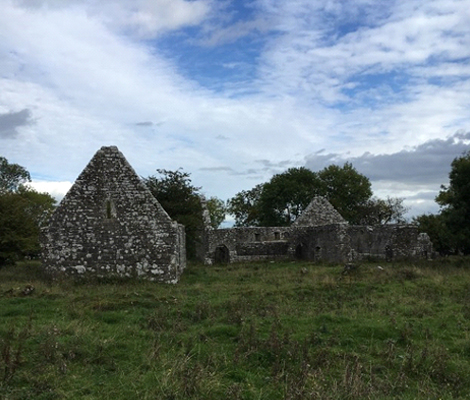
Birds
Lough Ree is one of the most important Midland sites for wintering waterfowl, with nationally important populations of Little Grebe (52), Whooper Swan (139), Widgeon (2,070), Teal (1,474), Mallard (1,087), Shoveler (54), Tufted Duck (1,012), Goldeneye (205), Coot (338), Golden Plover (3,058) and Lapwing (5,793) – all figures are three year mean peaks for the period 1997/98 to 1999/2000. Other species that occur in winter include Great Crested Grebe (29), Cormorant (99), Curlew (254) and Black-headed Gull (307) as well as the resident Mute Swan (85).
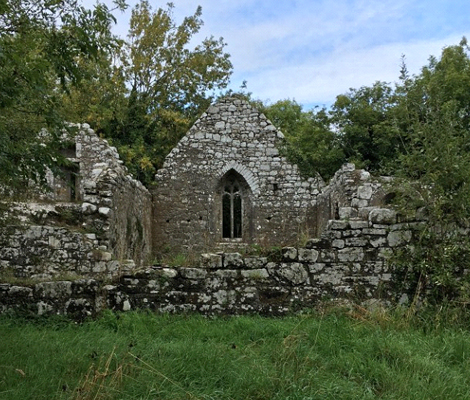
Fish
Lough Ree holds excellent stocks of all coarse fish species in Ireland and is noted for its pike and its many bays contain roach, tench and in particular bream. It also contains fine trout, particularly early and late in the season. There is no fishing licence required to fish the River Shannon or Lough Ree.
Lanesboro Hot Water Stretch:
Lanesboro offers excellent facilities for the Coarse Angler. This is an ideal base for the Pike angler interested in fishing Lough Ree where you can catch Pike up to 20lbs +.
The well known Lanesboro hot water stretch lies just north of Lough Ree on the River Shannon. With a regular release of hot water from the power station, this venue provides the ideal conditions for coarse fish. Tench, Hybrids, Roach and large Bream abound the waters here. The best time for large Bream is from late March to the end of May but can also be productive at other times, weather and river levels permitting. Fishing with a float or ledger is likely to get the best results. Specimen Bream and Tench have been verified over the years by the Irish Specimen Fish Committee. Tench fishing is best in May and June but can also be good at other times to October. Anglers have reported catching and losing large carp, sometimes breaking in large fish.
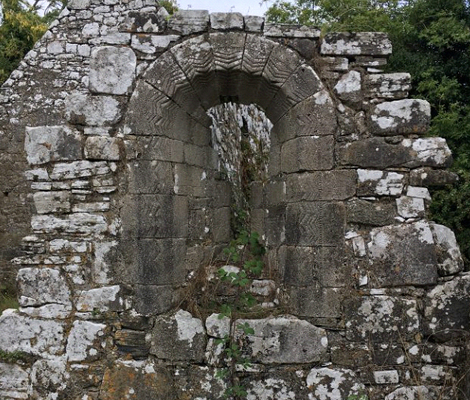
Upstream is the hot water flusher and fishing is easy along a concrete platform. Downstream of the bridge there is a reed bed dividing the river, also along a concrete ribbon. This is a good spot for feeder fishing and best results are likely fishing near the reed beds. River flows may vary depending on the volume of hot water being released from the Power Station. This is a good area particularly for large Tench from mid May to October conditions permitting. Fish to 7lbs have been recorded here.
During peak season from April to May and again September to October spaces are generally well competed for and anglers are advised to get their spot as early as possible in the day during these times. The stretch is well baited much of the time by the many visiting anglers who tend to fish here for up to a week at a time.
There are six venues from which to choose – The renowned Hot Water Stretch, The Cut, Kilnacarrow, Lough Ree’s Northern Shores and two lakes near Longford town, Clooncose and Lough Sallagh.

Kilnacarrow:
Kilnacarrow is a very secluded area located approximately 3 kms upstream of Lanesboro on the River Shannon. The area fishes best from April to October. It can also fish very well for Roach during the winter and spring months given suitable water levels and conditions. Present are quality Bream, Roach, Hybrids and some Tench, especially productive during the summer. Ledger fishing at a long cast is likely to produce the best results.
The Cut:
The Cut is located on the Shannon downstream of Lanesboro near Lough Ree. There is an island in the centre of the river. Fishing is possible from the main bank and the northern end of the Island. You can expect to encounter large Bream, Roach, Hybrids, Perch and Pike . Best results are likely using feeder with plenty of ground bait . Large bags of Bream are possible here employing the correct tactics and is especially productive from April to early June. Fishing can be especially good during the night hours as bream patrol to and fro from Lough Ree.
Lough Ree is one of Ireland’s larger lakes and has the capacity to produce large Pike to 20+lbs. Lanesboro provides an ideal base for the Pike angler wishing to explore the northern shores of the lake. Boats and Guides are available in the village, see our contacts list on our main page. Trolling dead bait and plugs will get the best results. In April concentrate close to the margins as the Pike complete spawning. Vary tactics.
Coarse angling is possible around the islands and shores on calmer days but generally this is not practiced. Similar to the northern shores of Lough Derg at Portumna, there is potential to explore this type of fishing which we feel could reap significant rewards for those willing to experiment and are adventurous – but beware of the dangers of any lake particularly during windy weather – seek local advice. Anglers opting for this type of fishing will require a boat which can be hired at Lanesboro
Flora
The water of Lough Ree tends to be strongly peat-stained, restricting macrophytes to depths of less than 2 m, and as a consequence, macrophytes are restricted to sheltered bays, where a typical Shannon flora occurs. Speciespresent include Intermediate Bladderwort (Utricularia intermedia), pondweeds (Potamogeton spp.), Quillwort (Isoetes lacustris), Greater Duckweed (Spirodela polyrhiza), stoneworts (Charaspp. including C. pedunculata) and Arrowhead (Sagittaria sagittifolia). The latter is a scarce species which is almost confined in its occurrence to the Shannon Basin.
Reedbeds of Common Reed (Phragmites australis) are an extensive habitat in a number of more sheltered placesaround the lake, but single-species ‘swamps’ consisting of such species as Common Club-rush (Scirpus lacustris),Slender Sedge (Carex lasiocarpa), Great Fen-sedge (Cladium mariscus) and two scarce species of sedge (Carexappropinquata and C. elata) also occur in suitable places. Some of these grade up into species-rich alkaline fen with Black Bog-rush (Schoenus nigricans) and Whorlgrass (Catabrosa aquatica), or freshwater marsh with abundant Water Dock (Rumex hydrolapathum) and Hemp-agrimony (Eupatorium cannabinum). Lowland wet grassland is found in abundance around the shore and occurs in two types. One is ‘callowland’, grassland that floods in winter. This provides feeding for winter waterfowl and breeding waders. The other is an unusual community on stony wet lake shore which is found in many places around the lake and is characterized by Water Germander (Teucrium scordium), a scarce plant species almost confined to this lake and Lough Derg. Dry calcareous grassland occurs scattered around the lake shore. This supports typical species such as Yellow-wort (Blackstonia perfoliata), Carline Thistle (Carlina vulgaris) and Quaking-grass (Briza media). Orchids also feature in this habitat e.g. Bee Orchid (Ophrys apifera) and Common Spotted-orchid (Dactylorhiza fuchsii). Limestone pavement occurs occasionally around the lake shore. The most substantial area is at Rathcline in the extreme north-east. While this has been planted with commercial forestry since the 1950s, it still displays a diverse representation of pavement types, from the typical clint-gryke system to large blocky pavements and scattered boulders. In all cases the pavement is covered by a bryophyte-rich flora, with abundant Ivy (Hedera helix), and a scrub layer dominated by Ash (Fraxinus excelsior), Hazel (Corylus avellana) and some Spindle (Euonymuseuropaeus). The ground flora is variable, though in places it is species-rich.
Dry broadleaved semi-natural woodland occurs in several places around the lake, most notably at St John’s Woodand on Hare Island. St John’s Wood is recognised as the largest and most natural woodland in the Midlands. Its canopy is dominated by Hazel, Pedunculate Oak (Quercus robur), Holly (Ilex aquifolium) and Ash, but a range of other trees and shrubs occur, including Wych Elm (Ulmus glabra), Yew (Taxus baccata), Wild Cherry (Prunus avium) and Irish Whitebeam (Sorbus hibernica). The ground flora of St. John’s Wood is species-rich, and is remarkable for the presence of two species, Toothwort (Lathraea squamaria) and Bird’s-nest Orchid (Neottia nidusavis), which tend to occur in sites with a long history of uninterrupted woodland cover. The tree species composition on Hare Island is similar to that in St. John’s Wood, with additional non-native species such as Sycamore (Acer pseudoplatanus) and Beech (Fagus sylvatica). This wood also has an exceptionally rich ground flora.
Some of the smaller areas of woodland around Lough Ree are mixed woodland with a high percentage of exotics such as Beech. Some areas of well-developed Hazel scrub also occur.
Pockets of wet woodland occur around the lake. Most of these are dominated by willows (Salix spp.), Alder (Alnusglutinosa) and Downy Birch (Betula pubescens). In one such wood, at Ross Lough, the terrestrial alga, Trentopohliasp has a specialised niche on the willow trunks. The ground layer has a rich bryophyte flora (Calliergon spp. And Sphagnum spp.), scattered clumps of Greater Tussock-sedge (Carex paniculata) and a good diversity of herb species, including Water Dock and Fen Bedstraw (Gallium uliginosum). Small examples of raised bog occur, which are of interest in that they show a natural transition through wet woodland and/or swamp to lakeshore habitats. Active Raised Bog (ARB) habitat comprises areas of high bog that are wet and actively peat forming, where the percentage cover of bog mosses (Sphagnum spp.) is high, and where some or all of the following features occur: hummocks, pools, wet flats, Sphagnum lawns, flushes and soaks. Results from surveys of the raised bog habitat in 2003 indicate the presence of 5.9 ha of Active Raised Bog (ARB). Also present are examples of Degraded Raised Bog (DRB) capable of regeneration. In general, the vegetation of these degraded areas is dominated by typical raised bog species such as Cross-leaved Heath (Erica tetralix), Heather (Calluna Vulgaris), Hare’s-tail Cottongrass (Eriophorum vaginatum), Bog Asphodel (Narthecium ossifragum) and Deergras.
Picture’s supplied by Robert O’Bryne (The Irish Aesthete)